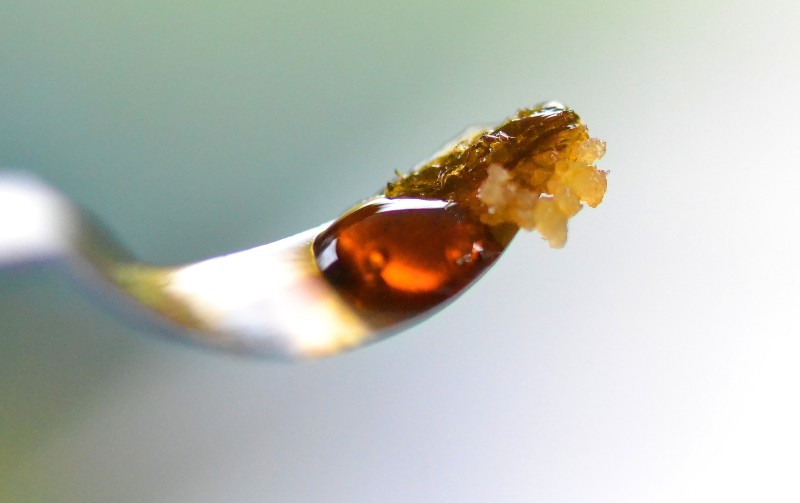Cannabis concentrates have become quite popular over the last couple of years. They are commonly used for their potent and high-intensity medicinal effects. Though most cannabis enthusiasts know how to use cannabis concentrates, very few are aware of how they are made.
Therefore, if you are interested in the science that goes behind cannabis concentrates, you have come to the right post. Today we are going to take a deep dive into the process of extracting concentrates from cannabis buds, so keep reading, and all of your questions will be answered.
What are Cannabis Concentrates?
In broad terms, a cannabis concentrate is anything that is made by extracting compounds like cannabinoids and terpenes. There are various types of concentrates, which are used for different purposes. The method that was used for extraction, or the base strain or bud that is used, determines the attributes of the final concentrate.
However, one thing that all concentrates have in common is that they are significantly more potent than regular marijuana.
They can be used for both recreational and medical purposes; however, the increased potency makes them quite suitable for medical use in severe cases.
How are Cannabis Concentrates Made?
Well, there is a lot of science and chemistry that goes behind making concentrates, however, broadly speaking, most methods involve using a solvent to extract the compounds from the cannabis buds and flowers,and then certain methods are used to remove the solvent so that the pure concentrates are the only thing that remains.
Here is a detailed scientific description of the primary concentrate extraction techniques.
Hydrocarbon Extraction
As the name suggests, in this method, certain hydrocarbon compounds are used to extract the concentrate from the cannabis strains. Hydrocarbons are organic compounds that are made entirely from hydrogen and carbon molecules. Butane is the most commonly used organic compound for this extraction methods; however, some people mix hydrocarbons with different polarities, which can result in a more thorough extraction.
Hydrocarbon extraction is a fairly common technique that is also used outside the cannabis industry to extract essential oils. In the case of cannabis, the product you will gain through hydrocarbon extraction is hash oil, also known as butane hash oil or BHO.
To start the process, the cannabis bud is placed in a tube, and the solvent, i.e. butane, is filled in a separate vessel. The butane is pumped into the tube containing the cannabis strain or flowers, where CBD, CBD and THC are drawn from the strain into the hydrocarbon.
The processed butane is then collected in a separate flask, and heated until the unwanted hydrocarbons and other toxins are evaporated completely. You are left with a pure and concentrated mixture of cannabis goodness.
The golden substance that is left behind after heating is Butane hash oil. This oil can be used as it is, or it can be crystallized to make shatter, which is a prevalent form of cannabis concentrate. These days you can buy cannabis online, along with concentrates, vapes, edibles and numerous other cannabis-related products.
Supercritical CO2 Extraction
This is a modern extraction method that is becoming more and more common in the cannabis industry. As the name indicates, this method used supercritical CO2 as a solvent. Now, you might be thinking, what is supercritical CO2? Well, CO2 is the chemical formula for carbon dioxide, which is a gas. When gas is pressurized to such an extent that it changes its physical state from a gas to a liquid, it is said to be supercritical. Therefore, supercritical CO2 is carbon dioxide gas stored at very high pressure.
This method of extraction has numerous advantages over the other methods mentioned on this list. Firstly, CO2 is an organic compound, and it is safer than alcohol and hydrocarbons. Secondly, unlike hydrocarbon or ethanol extraction, this method does not leave any impurities or harmful substances in the extracts. Lastly, CO2 is a more natural solvent to remove after the removal is complete.
In this process, the solvent is poured over the cannabis strain or its flowers, and the cannabinoids and terpenes are extracted into it. CO2 is also better at extracting chemicals from the plants because of its shallow temperature. High temperatures can damage the final product; therefore, liquid co2 is quite a suitable solvent. It preserves the essence, flavor and aroma of the bud, and gives the concentrate a fantastic taste
Moreover, liquid CO2 is also very easy to remove from the final mixture. As it has a shallow boiling point and it evaporates naturally at room temperature without any heat,
Therefore, in hindsight CO2 extraction does seem like the most authentic and lucrative method for extraction of cannabinoids; however, it can have some drawbacks. To perform a supercritical CO2 extraction, you will need to buy special equipment that keeps the tubes and vessels airtight, and pressurized; otherwise, the high pressure of CO2 would be challenging to maintain.
This extraction method results in a final product with a thin liquid consistency, and it is perfect for use in vapes and e-cigs, which are now very common.
Ethanol Extraction
This extraction method is quite similar to hydrocarbon extraction, as it follows the same principle of extracting the cannabinoids into a solvent, and then eliminating the solvent to get a pure product. However, instead of hydrocarbons, ethanol is used as a solvent.
Ethanol is a chemical compound which is also known as ethyl alcohol or only alcohol. It is chemically composed of hydrogen, carbon and oxygen molecules. Moreover, ethanol is a polar compound, which makes is effective in drawing out the cannabinoids from the bud more effectively.
However, apart from the required CBD, CBA and THC, this method will also extract pigments and chlorophyll from the plant. These elements can be useful, but mostly they are removed to get a pure and potent concentrate.
Activated carbon filters are used to extract impurities from the product. Activated carbon has an incredibly porous and absorbing nature, which allows it to soak up the contaminants. After the contaminants are removed, the product is heated to boil off the alcohol, and the final concentrate is achieved. This concentrate usually has a higher THC content than concentrate created through hydrocarbon extraction method.
To sum it all up, like any other chemical process, a lot of study and effort goes into making concentrates. The properties of the final product depend on the strain used and mixing different strains can result in different foci.








